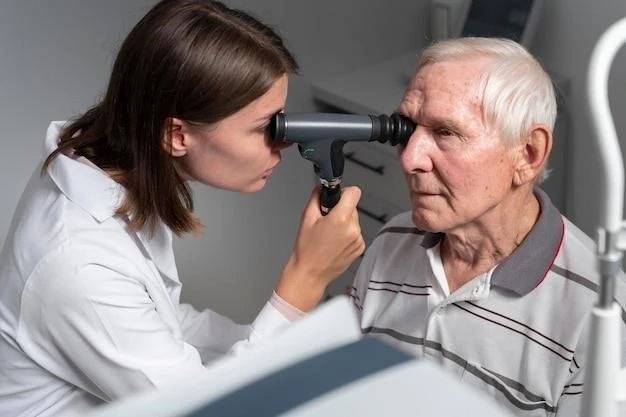Understanding Leber Optic Atrophy
Leber Optic Atrophy is a hereditary eye disease characterized by vision impairment due to a mitochondrial DNA mutation affecting retinal ganglion cells and the optic nerve. Understanding the genetic basis and symptoms of this genetic disorder is crucial in its diagnosis and management.
Introduction to Leber Optic Atrophy
Leber Optic Atrophy, also known as Leber’s Hereditary Optic Neuropathy (LHON), is a rare genetic disorder that primarily affects the optic nerve, leading to vision loss. This condition typically manifests in young adulthood and predominantly affects males. The disease is caused by mutations in mitochondrial DNA, impacting the function of cells critical for vision. Understanding the implications of this eye disease is essential for individuals and their families, as timely diagnosis and management can help in preserving remaining vision and optimizing quality of life. If you or a loved one experience symptoms of vision impairment, such as central vision loss or color vision abnormalities, consulting a healthcare professional, especially a neuro-ophthalmologist, is crucial for accurate diagnosis and appropriate treatment strategies. By raising awareness about Leber Optic Atrophy, we can promote better understanding, support, and research efforts to improve outcomes for individuals affected by this condition.
Causes and Genetic Basis
Leber Optic Atrophy is primarily caused by mutations in mitochondrial DNA, leading to dysfunction in the energy-producing mitochondria of retinal ganglion cells. These mutations interfere with the cells’ ability to maintain a healthy optic nerve, resulting in vision impairment. The genetic basis of this condition involves inherited mutations, typically passed down maternally, as mitochondria are inherited from the mother. Understanding the genetic underpinnings of Leber Optic Atrophy is crucial for individuals and families as it can help in early detection and management of the disease. Genetic testing plays a vital role in confirming a diagnosis and identifying at-risk family members who may benefit from proactive monitoring. By recognizing the genetic factors contributing to this hereditary eye disease, individuals can make informed decisions about their eye health and explore available treatment options with the guidance of healthcare professionals specialized in neuro-ophthalmology.
Symptoms and Diagnosis
Leber Optic Atrophy presents with symptoms such as central vision loss, color vision abnormalities, and reduced visual acuity, typically affecting both eyes. Individuals may experience a sudden or gradual onset of vision impairment, often starting in young adulthood. Diagnosis of this hereditary eye disease involves a comprehensive eye examination, visual field testing, optical coherence tomography, and genetic testing to confirm the presence of mitochondrial DNA mutations associated with Leber Optic Atrophy. It is essential for individuals experiencing any changes in their vision, especially if there is a family history of the condition, to seek evaluation from a neuro-ophthalmologist. Early diagnosis can aid in the timely initiation of appropriate management strategies to help preserve remaining vision and mitigate the progression of vision loss. By understanding the symptoms and diagnostic approaches for Leber Optic Atrophy, individuals can take proactive steps towards maintaining their eye health and overall well-being.
Understanding Vision Loss in Leber Optic Atrophy
Vision loss in Leber Optic Atrophy results from the degeneration of retinal ganglion cells, which are responsible for transmitting visual information from the eye to the brain through the optic nerve. The mitochondrial DNA mutations disrupt the function of these cells, leading to a gradual loss of central vision and color perception. As the condition progresses, individuals may experience worsening visual acuity and challenges with tasks that require sharp vision, such as reading or recognizing faces. Understanding the impact of vision loss in Leber Optic Atrophy is crucial for individuals and their caregivers to adapt to changes in daily life and seek appropriate support. By working closely with healthcare providers, including neuro-ophthalmologists, individuals can learn to navigate the challenges posed by vision impairment and explore tools and strategies to optimize their remaining vision and enhance their quality of life.
Hereditary Nature of Leber Optic Atrophy
Leber Optic Atrophy is a hereditary condition passed down through maternal inheritance due to mutations in mitochondrial DNA. The hereditary nature of this eye disease means that individuals with affected family members are at a higher risk of developing the condition themselves. It is crucial for those with a family history of Leber Optic Atrophy to undergo genetic counseling and testing to assess their risk and understand the implications for their eye health. By recognizing the hereditary pattern of this condition, individuals can take proactive measures to monitor their vision and seek regular evaluations from healthcare professionals specializing in neuro-ophthalmology. Understanding the hereditary nature of Leber Optic Atrophy can empower individuals to make informed decisions about their eye care and genetic risk factors, ultimately leading to better management and support for those affected by this genetic disorder.

Treatment Options and Management
Currently, there is no specific cure for Leber Optic Atrophy; however, various treatment options and management strategies aim to support visual function and quality of life. Some approaches may include low vision aids, such as magnifiers or specialized glasses, to enhance remaining vision and assist with daily activities. Additionally, visual rehabilitation programs and occupational therapy can help individuals adapt to vision loss and maximize independence. Research into potential therapies, such as gene-based treatments or mitochondrial support supplements, is ongoing to explore future treatment possibilities. It is essential for individuals with Leber Optic Atrophy to work closely with a multidisciplinary healthcare team, including neuro-ophthalmologists and genetic counselors, to develop personalized treatment plans tailored to their specific needs. By staying informed about available treatment options and actively participating in their eye care, individuals can optimize their visual outcomes and overall well-being while living with Leber Optic Atrophy.
Importance of Consulting a Neuro-Ophthalmologist
Consulting a neuro-ophthalmologist is crucial for individuals diagnosed with Leber Optic Atrophy to receive specialized care that addresses the complex interactions between the eyes and the brain. Neuro-ophthalmologists are uniquely trained to diagnose and manage conditions affecting the visual pathways, including hereditary disorders like Leber Optic Atrophy. These specialists can perform detailed evaluations, such as visual field testing and optic nerve imaging, to assess the extent of vision loss and monitor disease progression. Additionally, neuro-ophthalmologists collaborate with other healthcare providers to create personalized treatment plans that may include low vision aids, rehabilitation programs, and genetic counseling. By seeking the expertise of a neuro-ophthalmologist, individuals with Leber Optic Atrophy can access comprehensive care, valuable support, and up-to-date information on research advancements, ultimately improving their quality of life and visual outcomes;
Support and Resources for Individuals with Leber Optic Atrophy
Individuals living with Leber Optic Atrophy can benefit from a range of support services and resources designed to help them navigate the challenges associated with vision loss. Support groups, online forums, and community organizations offer opportunities for individuals to connect with others facing similar experiences, share strategies for coping with vision impairment, and access emotional support. Additionally, vision rehabilitation services, provided by certified professionals, can assist individuals in developing skills to maintain independence in daily tasks and improve overall quality of life. Various advocacy organizations and foundations dedicated to vision health and genetic disorders may also offer educational materials, financial assistance programs, and updates on research initiatives related to Leber Optic Atrophy. By engaging with these support networks and resources, individuals with Leber Optic Atrophy can find encouragement, valuable information, and a sense of community, empowering them to live well with their condition.
Lifestyle Modifications for Improved Quality of Life
Individuals with Leber Optic Atrophy can enhance their quality of life by incorporating various lifestyle modifications tailored to their visual needs. Simple adjustments like ensuring well-lit environments, using contrasting colors for better visibility, and minimizing glare can create a more comfortable living space. Organizational strategies, such as labeling items and establishing daily routines, can streamline tasks and promote independence. Technology, including voice-activated devices, screen readers, and magnification apps, can assist with reading, communication, and navigation. Prioritizing regular eye exams and overall health maintenance, like managing systemic conditions and adopting a healthy diet, can support ocular health and general well-being. Engaging in low-impact physical activities and practicing stress-reducing techniques like meditation or yoga can also contribute to overall quality of life. By making these lifestyle modifications and embracing adaptive strategies, individuals can optimize their daily functioning, maintain independence, and lead fulfilling lives despite the challenges posed by Leber Optic Atrophy.
Conclusion⁚ Promoting Awareness and Research Efforts
In conclusion, raising awareness about Leber Optic Atrophy is essential to educate the public, healthcare providers, and policymakers about this rare genetic disorder. By increasing awareness, we can enhance early detection, improve access to specialized care, and promote support services for individuals affected by Leber Optic Atrophy. Furthermore, advocating for increased research efforts and funding can drive advancements in understanding the disease mechanisms, developing new treatment options, and ultimately working towards a cure. It is vital for individuals, advocacy groups, and researchers to collaborate in generating awareness, supporting affected individuals, and pushing forward the frontiers of scientific exploration in the field of genetic eye diseases like Leber Optic Atrophy. Together, we can make a difference in the lives of those impacted by this condition and contribute to ongoing efforts aimed at enhancing outcomes, expanding resources, and fostering hope for a brighter future for individuals living with Leber Optic Atrophy.
